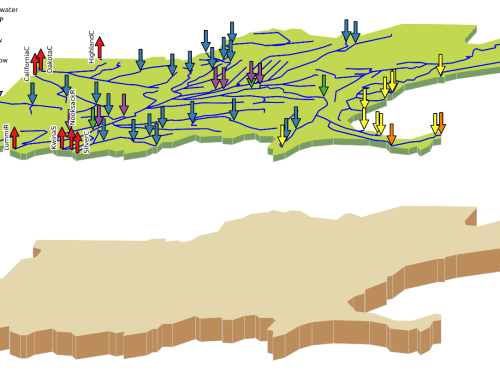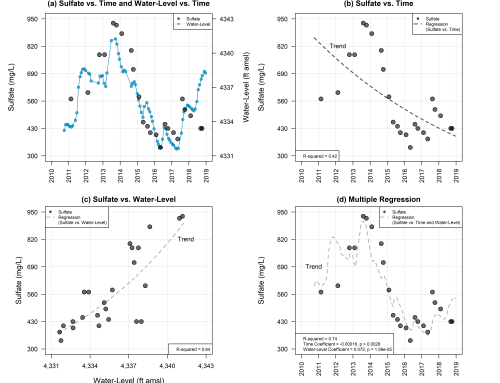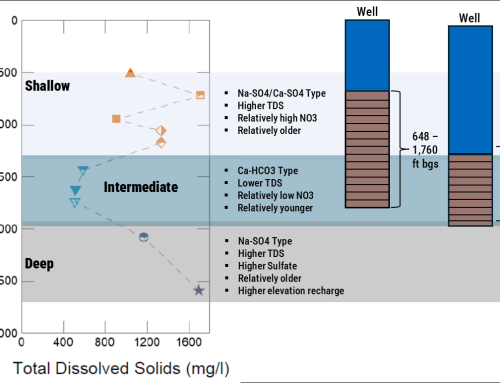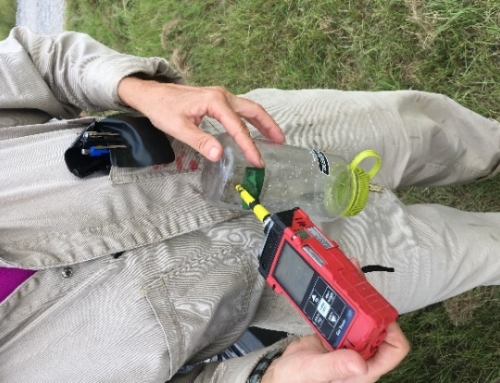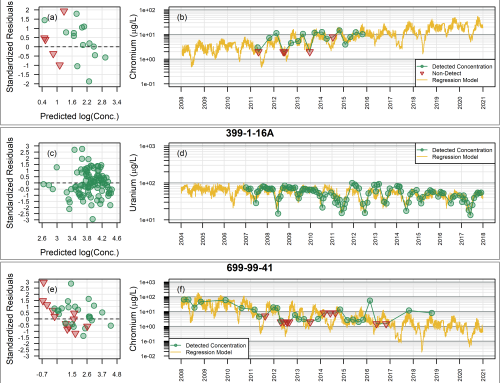SSP&A was retained to develop a groundwater transport model that would explicitly account for the long-term fate of arsenic and boron in aquifers underlying the Coronet Industries Alternative Site, located in Plant City, Florida. Quantification of the potential source of arsenic and boron to groundwater (surficial loading of arsenic and boron from mineral-bound forms) was accomplished by collecting representative source samples and analyzing them for mineralogy, the distribution of arsenic and boron between mineral-bound forms, and the solubility of these species.
Analyses included spectroscopic methods such as x-ray power diffraction (XRD), energy dispersive x-ray spectrometer (SEM/EDS), and electron probe micro-analyzer (EMPA) to identify minerals and arsenic/boron mineral-bound associations; sequential extractions to identify associations in phases not targeted by spectroscopy due to detection limit restrictions; batch laboratory Synthetic Precipitation Leaching Procedure (SPLP) leaching tests to quantify the total arsenic and boron leaching potential of different source materials; and batch adsorption tests to quantify the adsorption capacity of aquifer minerals.
Quantification of a second potential source (arsenic and boron in residual brine) was accomplished by calibrating a one-dimensional (1D) groundwater transport model to observe concentrations in shallow, intermediate, and deep groundwater wells. This groundwater transport model was based on the U.S. Geological Survey (USGS) reactive transport model PHREEQC/PHAST platform, which explicitly includes a surface complexation model that predicts the adsorption of arsenic and boron based on dissolved and mineral-bound concentrations, groundwater pH, and concentrations of competing anions. Long-term model predictions were made with the calibrated model to ascertain whether or not there is a potential for arsenic and boron to reach beyond the bottom of the Intermediate Aquifer at concentrations that exceed regulatory standards.
Publication
Bessinger, B. and R.J-C. Hennet. 2019. Effectiveness of Monitored Natural Attenuation (MNA) as a Groundwater Remedy for Arsenic in Phosphatic Wastes. Groundwater Monitoring and Remediation 39, no. 4: 52-68.
An abstract of this publication is available on the National Groundwater Association website for non-members (as well as the complete technical paper for NGWA members) at: https://ngwa.onlinelibrary.wiley.com/doi/abs/10.1111/gwmr.12353


